Key takeaways:
- Academic publishing is essential for disseminating research, fostering collaboration, and influencing knowledge in society.
- Peer review transparency enhances credibility and trust in research but poses challenges like potential bias and logistical complexities.
- Open peer review can facilitate learning and improve feedback quality, but raises concerns about reviewer accountability and reputation.
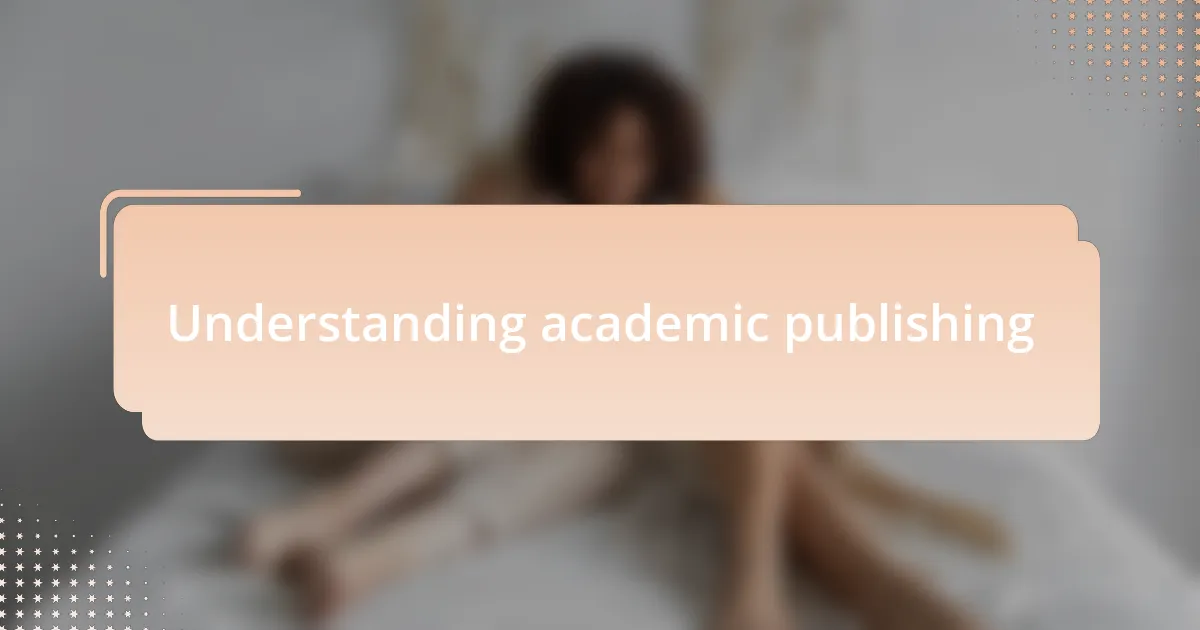
Understanding academic publishing
Academic publishing is the vehicle through which research findings are disseminated, allowing scholars to share their discoveries with the wider community. I remember when I first submitted my work; the anticipation was palpable. Would my arguments hold up? It’s a nerve-wracking journey that demands both rigorous research and a willingness to embrace the critique of peers.
The process often feels like a rite of passage, where feedback is not just welcome but essential for refinement. Have you ever considered how many revisions a single paper undergoes before it sees the light of day? From initial submission to final publication, each stage serves a purpose, honing the work until it’s ready to spark conversations and inspire future research. It’s a humbling experience, yet it reinforces the collaborative nature of academia.
Moreover, academic publishing isn’t just about individual career advancement; it’s a crucial component of knowledge-building in society. I find it fascinating to think about how one article can influence policies or shape a field of study. In a sense, every time we contribute to this process, we’re adding our voice to a broader dialogue that transcends borders and disciplines. Isn’t it incredible to think how interconnected our intellectual pursuits truly are?
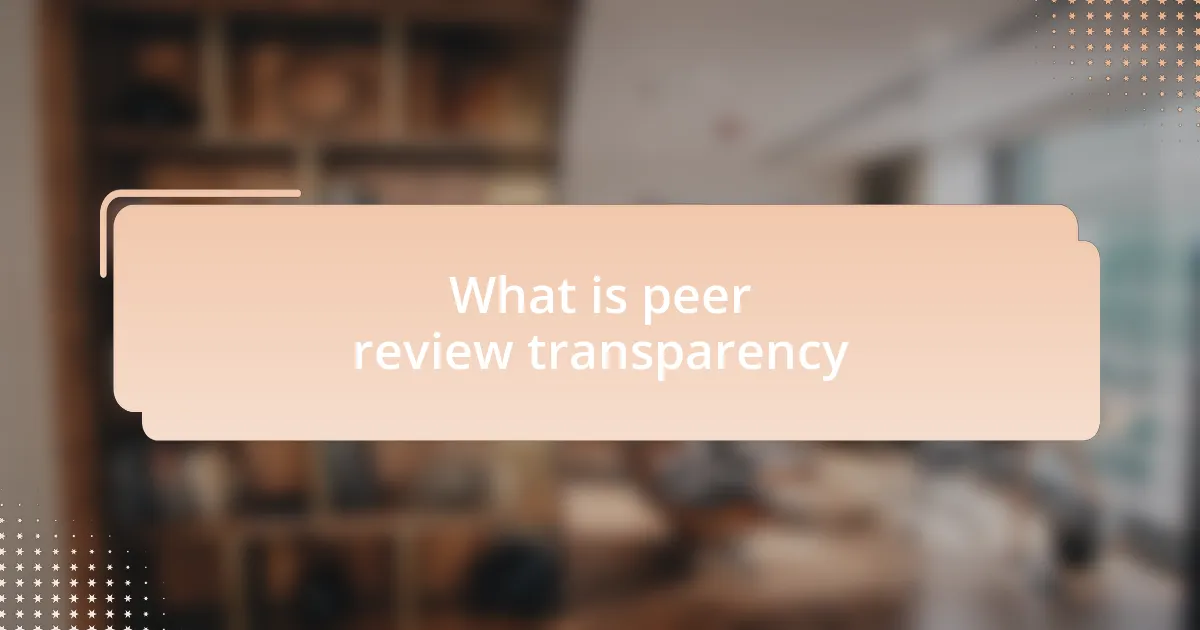
What is peer review transparency
Peer review transparency is the practice of making the review process of scholarly articles more open and accessible to the public. When I first encountered this concept, it sparked my curiosity about the integrity and accountability of academic publishing. Imagine knowing exactly who reviewed your paper and what their feedback entailed—how valuable would that be for understanding the quality and rigor of the work?
In essence, transparency involves sharing details about the reviewers, the review process, and sometimes even the reviews themselves. This openness can demystify the often opaque process of peer review, allowing readers to appreciate the effort and expert opinions behind published research. I vividly remember the first time I read a report that listed the reviewers’ comments alongside an article; it changed my perspective on how I viewed critiques—I felt a deeper connection and trust.
However, while transparency enhances the credibility of research, it also brings challenges, such as concerns about confidentiality and the potential for bias. Wouldn’t it be tricky to balance openness with the need for honest, constructive criticism? Personally, I see transparency as a double-edged sword—full of promise and potential pitfalls, yet essential for fostering trust in academia.
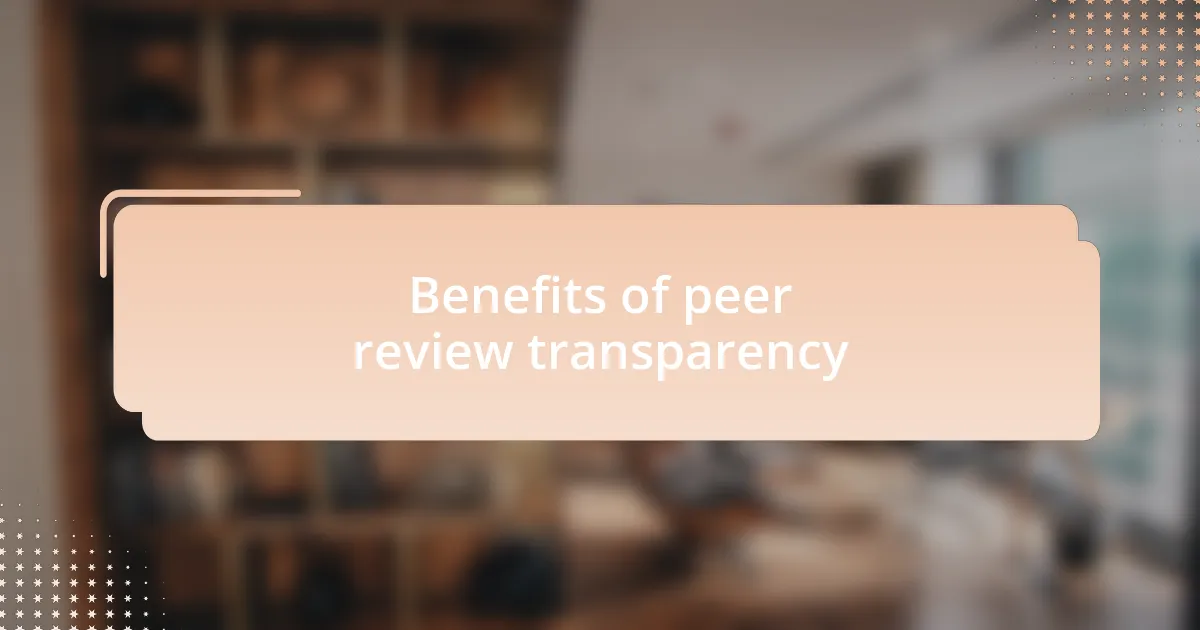
Benefits of peer review transparency
Peer review transparency offers significant advantages that can reshape the landscape of academic publishing. For instance, when the review process is open, it allows researchers to learn from the critiques provided by seasoned peers. I recall submitting my first paper and later discovering a wealth of insights in the reviewer comments that I hadn’t considered; it was a game-changer for my development as a scholar. Doesn’t it make sense that sharing these observations can help others grow as well?
Moreover, transparency can enhance the overall trust in academic journals. The credibility of published research improves when the community can see the standard of reviews and the qualifications of reviewers. I remember discussing a particularly impactful paper with colleagues, and we all agreed that knowing who reviewed it elevated our confidence in its findings. Isn’t it comforting to feel assured that research has undergone rigorous scrutiny?
Finally, the open nature of peer reviews can encourage more thoughtful and constructive feedback. When reviewers know their comments might be publicly accessible, they often take extra care with their evaluations. I once had an experience where a review felt aimless and unhelpful, but now I find myself wishing for a transparent process that holds reviewers accountable—imagine the enriched dialogue and improvement that could come from that!
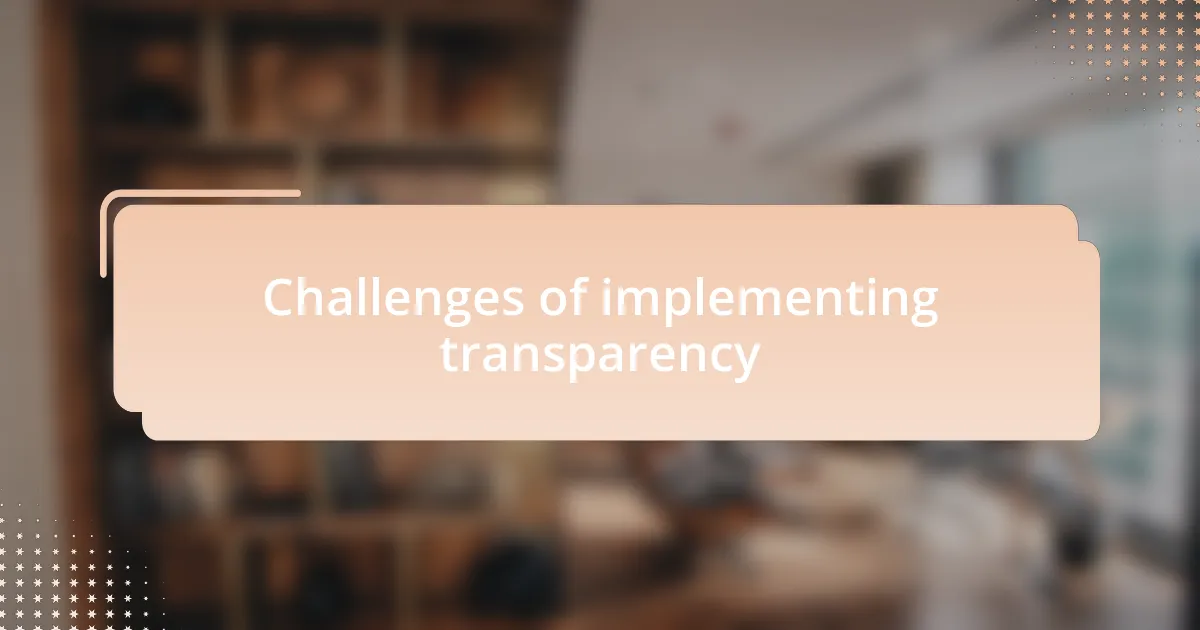
Challenges of implementing transparency
Implementing transparency in peer review comes with notable challenges that can be daunting for many academic journals. One major hurdle is the resistance from reviewers who may fear that public scrutiny could impact their reputation or their willingness to accept assignments. I can understand this concern; when I first encountered the idea of open reviews, I felt apprehensive about how my feedback could be perceived. Isn’t it natural to worry about criticism in a professional setting?
Another challenge is the potential for bias. When reviewers’ identities are known, there’s a risk that their opinions may be influenced by personal relationships or reputations. This was vividly apparent to me during a conference where we discussed bias in peer review; a colleague noted that their feedback might change based on who the author was. It made me question, could transparency inadvertently lead to favoritism or discrimination, rather than the fairness we strive for?
Lastly, the logistics of managing a transparent process can be overwhelming for journals. It requires significant resources to implement systems that allow for open reviews while maintaining efficiency. I recall a conversation with an editor who lamented about the increased workload associated with this shift. Shouldn’t our aim be to enhance the quality of research without adding unnecessary complexity to the publication process?
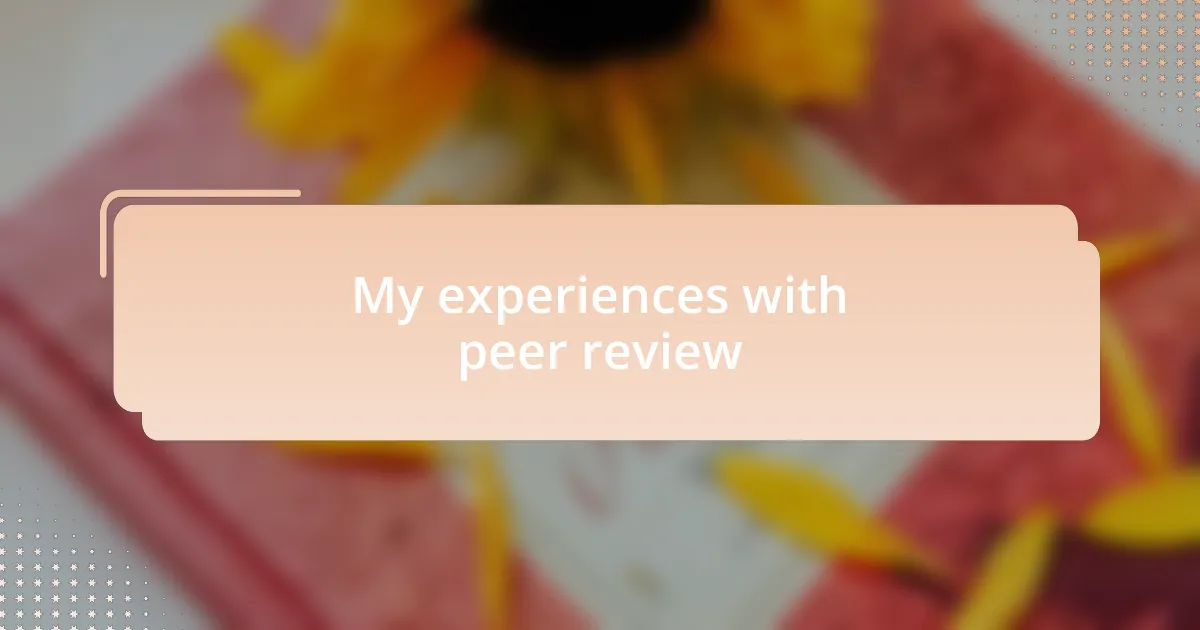
My experiences with peer review
My experiences with peer review have shaped my understanding of its complexities. I remember my first time as a reviewer, feeling both honored and overwhelmed. Looking back, I realized how nerve-wracking it was to critique someone else’s work, especially when I worried about my feedback being misinterpreted or taken personally. Isn’t it interesting how those initial fears can linger, even as we gain experience?
During my journey, I’ve noticed that peer review often feels like walking a tightrope. There have been moments when I received feedback that hit too close to home, prompting me to reevaluate my own biases. I once had a submission where the critiques seemed more about my established viewpoint rather than the content itself. It made me wonder—does a reviewer’s background unduly influence their response, and how do we navigate that while maintaining objectivity?
Moreover, I experienced firsthand how transparency could alter the dynamics of feedback. In a recent review process, the visibility of my comments made me more thoughtful, realizing they weren’t just for the editor’s eyes but for the public to assess. This raised the stakes significantly. I began asking myself—are we ready to embrace that kind of accountability, or could it deter constructive criticism altogether?